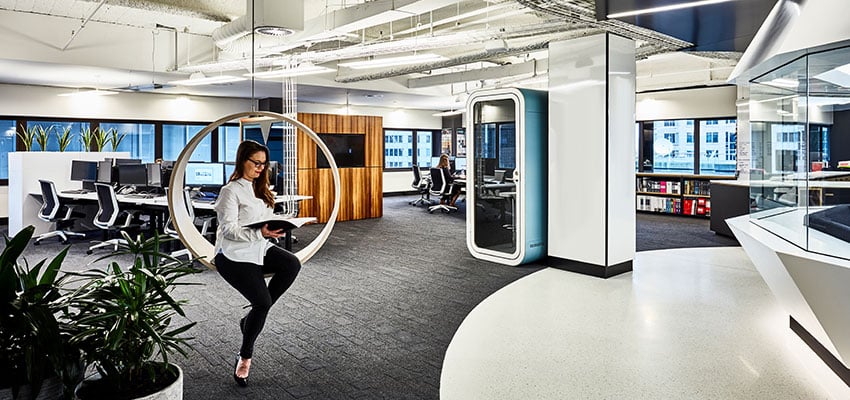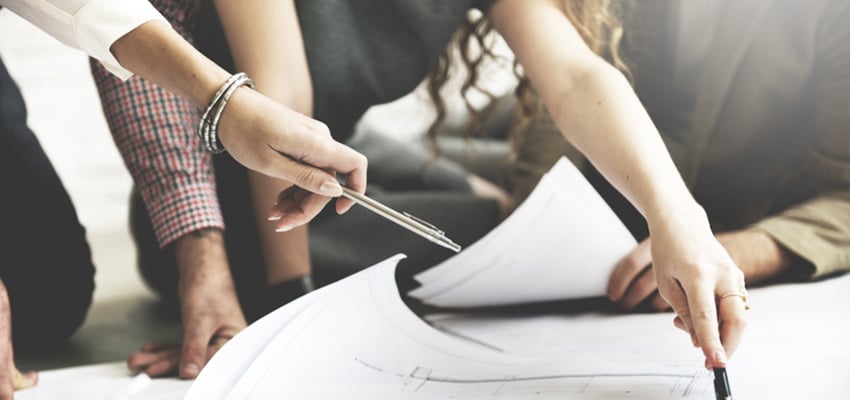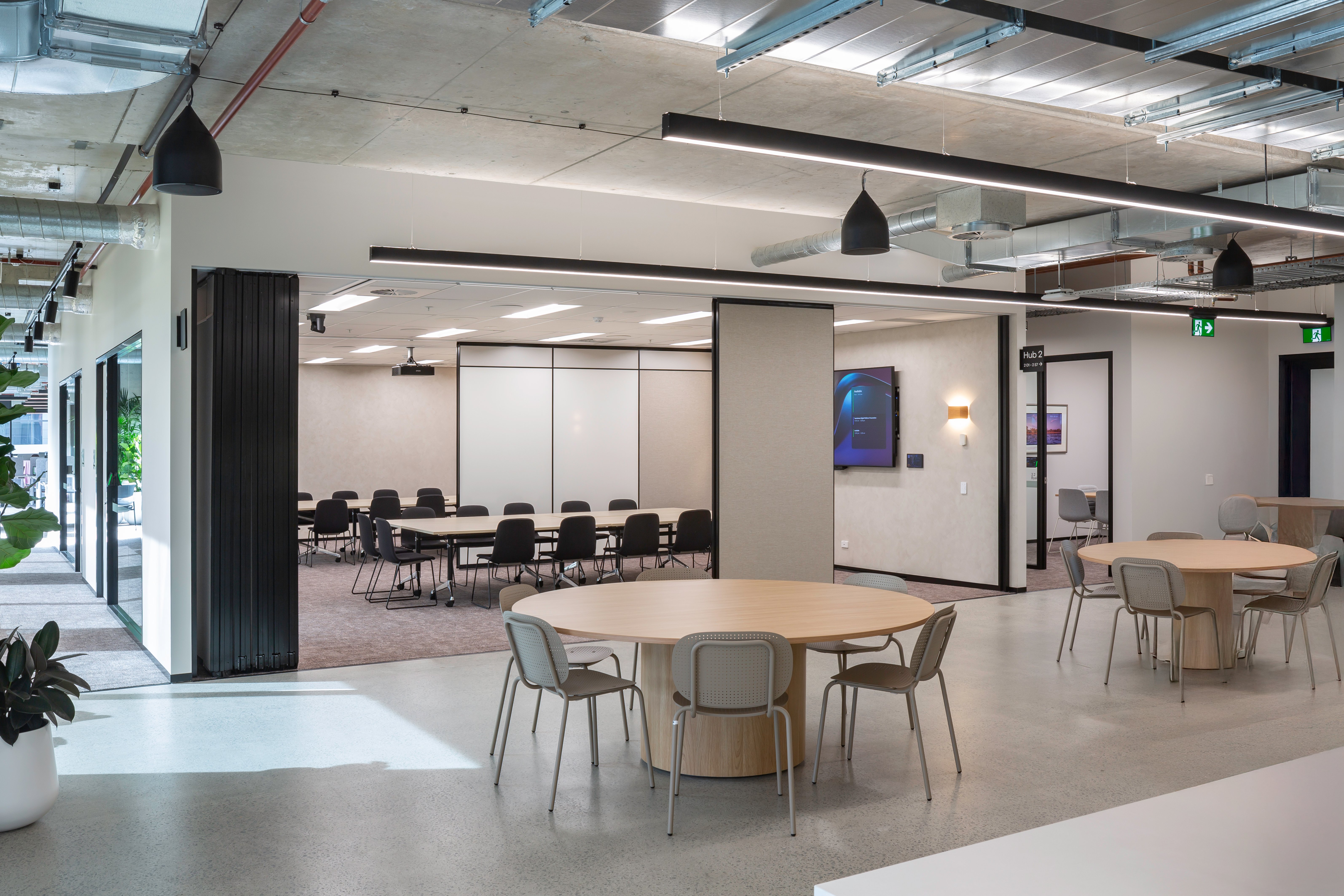Creating a Sustainable Office Space: Practical Ideas for Workplace Sustainability
At Axiom Workplaces, we believe that a sustainable office space goes beyond eco-friendly materials. it’s about making conscious choices that enhance efficiency, wellbeing, and environmental responsibility. From implementing energy-saving technologies to encouraging green commuting and mindful resource use, there are countless sustainable office ideas that help transform your workplace into a hub of innovation and care. Workplace sustainability starts with small steps, but the impact grows over time creating a culture where your team and the planet thrive together.
There are lots of reasons to consider implementing sustainable practices in your business. Not only is it good for the environment, but it can reduce overheads in the form of energy costs, improve the health and satisfaction of your staff, and attract customers looking to do business with likeminded brands. Here are some simple changes that will make your office more environmentally sustainable.
1. Go Paperless
Many organisations are well on their way to becoming paperless, but for some businesses, cutting out paper completely isn’t an option. If this is the case, make sure you recycle all paper and change the settings on your network so that paper is printed on both sides. If your company data is sensitive, look for a shredding company that offers a service where the paper is recycled once the information has been destroyed.
Of course, digital documents are easier and more affordable to store and retrieve. They reduce clutter in the office and if your business is in the cloud, the documents can be accessed from anywhere. It’s also a more secure way to run your business, should disaster strike. If you do need to print on paper, make sure you buy recycled paper from sustainable sources and use draft or toner-saving modes for internal printing that doesn’t need to be high quality. Don’t forget the paper towels in the bathroom—hand dryers can be a more hygienic, affordable and sustainable option.
2. Reuse & Recycle
Recycling is one of the easiest ways to make your office more environmentally friendly. Simply set up recycling bins around the office, with dedicated bins for glass, paper and plastics if your building collects these separately. Ink cartridges can be collected by Planet Ark, while electronic waste such as old monitors, printers, computers and cables can be dropped off at your nearest Tech Collect for recycling. If your coffee machine uses pods, recycle your capsules to avoid adding to the landfill toll.
Try to look for ways to reuse items, such as replacing disposable kitchen items with crockery and steel cutlery, or promoting the use of reusable mugs for the morning coffee run. You can also encourage employees to collect paper that’s only been printed on one side and use it as a notebook.
3. Reduce Energy
Reducing the electricity bill is not only good for the environment, but also for your bottom line. Here are some quick and easy ways to save energy in the office:
- make sure your office temperature is the right balance of comfort and cost, by setting the thermostat a few degrees lower in winter and a few degrees higher in summer
- walk around the office and see which areas are being heated or cooled unnecessarily, such as storage areas
- install energy efficient light globes in the office and consider sensor lighting for bathrooms and other places that don’t need to be constantly lit
- switch off TVs, lights and equipment when they’re not being used and disable screen savers—computers screens should go to sleep when they’re not in use
- close applications that you don’t use regularly on your computer and change the setting so they don’t open on login
- use laptops instead of desktops as they use less energy
- turn down the brightness setting on your computer screen to a level that’s both comfortable and energy efficient.
4. Add Plants
Adding some greenery to your office can do more than brighten up your office interior design. Psychologists at Exeter University found that employees are happier and perform better when living plants are added to the workplace, with a 15% increase in productivity and significant improvements in memory retention and other basic tests.
Plants also emit oxygen and reduce air pollution, making the air in your workplace cleaner and healthier to breathe. It can also reduce noise pollution, which is particularly important in an open-plan workplace. Try to use pot plants evenly around the office, so everyone can enjoy the benefits of nature.
5. Choose Sustainable Suppliers
Many suppliers understand that customers are looking for green products, so look at what your business purchases on a regular basis and see if there’s a more sustainable option. This may include natural bathroom or kitchen products, biodegradable cleaning products and recycled stationery.
Think about how far the products travel to reach you and see if there’s a local business offering a similar product to reduce your carbon footprint. Before procuring services, ask whether they have an environmental policy in place or relevant ISO certifications. Gaining accreditation through the Green Building Council of Australia can also let your customers know that you’re committed to maintaining a sustainable workplace.
As well as providing a more sustainable office, smart workplace design can also create spaces that promote wellness and wellbeing at work. Learn more in our eBook: The fundamental of wellness and wellbeing in workplace design.
Or, to learn more about sustainability in the workplace contact our expert consultants today.
Enhancing Office Sustainability: What Modern Workplaces Need Sustainability in the Office: A Smarter Way to Work
Workplace sustainability is no longer just a nice-to-have it’s now a key part of how modern offices operate. A sustainable workplace doesn’t only help the environment; it also supports staff wellbeing, reduces energy costs, and strengthens your brand image. At Axiom Workplaces, we’ve seen how sustainability in the office leads to real improvements across people, process, and performance.
Creating a more environmentally friendly office can begin with simple changes. Encouraging digital work to reduce paper use, switching to energy-efficient lighting, and engaging suppliers with eco-conscious values are all examples of sustainable work practices. These shifts lead to better results for your team and the planet.
Designing for a Sustainable Workplace
The best sustainable office design blends style with purpose. This might include integrating natural light, using recycled materials, or adding indoor plants to clean the air and improve focus. Smart layouts and low-energy equipment are also key parts of sustainable workplace solutions that reduce waste and long-term operating costs.
An eco-friendly office layout makes it easier for teams to form healthy habits. Features like shared spaces, comfortable breakout areas, and easy access to recycling points all contribute to better routines. Over time, these simple design decisions support a stronger culture of sustainability in an office environment.
Ideas That Support Workplace Sustainability
If you're looking for sustainability ideas for office improvements, start by thinking about how your workplace runs each day. Are your processes paper-heavy? Could your team benefit from greener commuting options? Are cleaning products and kitchen supplies sourced locally and responsibly?
Real change happens through consistent, practical steps. Switching to local suppliers can reduce your carbon footprint. Installing hand dryers instead of paper towels cuts down on waste. Promoting reusable coffee cups and office mugs helps reduce single-use plastics. These are all sustainable practices in the workplace that cost little but offer long-term benefits.
Improving Workplace Sustainability Over Time
To improve sustainability in the workplace, focus on three things: awareness, accessibility, and accountability. Make sustainable options easy to follow and keep your team informed on why it matters. Offering sustainability training or posting reminders near recycling areas can reinforce eco-conscious habits.
If you’re planning an office renovation, factor in sustainable workplace design early in the process. That includes choosing energy-efficient HVAC systems, opting for low-impact materials, and creating flexible spaces that evolve with your team. A growing number of companies are investing in sustainable office spaces because they support both current operations and future growth.
Sustainability That Works for People and the Planet
At Axiom Workplaces, we believe sustainable offices should reflect your values, support your team, and reduce your impact. Whether you're gathering green tips for the office or exploring sustainability in office design, the key is to stay consistent. Every improvement matters from saving energy to reusing resources.
Your office can become a real example of environmental sustainability in the workplace. When you commit to better practices, the impact is visible across staff engagement, operating costs, and your reputation as a responsible business. A sustainable workplace isn’t just good for the earth, it's better for business too.
Conclusion
Sustainability in the workplace isn’t just about being environmentally responsible, it's about creating an office that’s smarter, healthier, and more efficient. Whether you're reducing paper use, saving energy, or rethinking your office layout, small actions can lead to lasting change. Every step you take towards a more eco-friendly office helps your team, your budget, and the planet.
At the end of the day, a sustainable office supports better business. It shows your staff and customers that you care and that you're thinking ahead.
Why Choose Axiom Workplaces?
At Axiom Workplaces, we design offices that go beyond good looks and we build workspaces that perform. Our team understands how to blend sustainability with functionality, helping your business reduce its environmental impact while boosting wellbeing and productivity.
We don’t offer one-size-fits-all solutions. We take the time to understand your goals and create a sustainable office design that fits your culture, values, and future plans. From green materials to energy-smart layouts, we’ll guide you through every step.
Choose Axiom if you want a workplace that reflects your commitment to sustainability and sets your team up for long-term success.
Frequently Asked Questions (FAQs)









